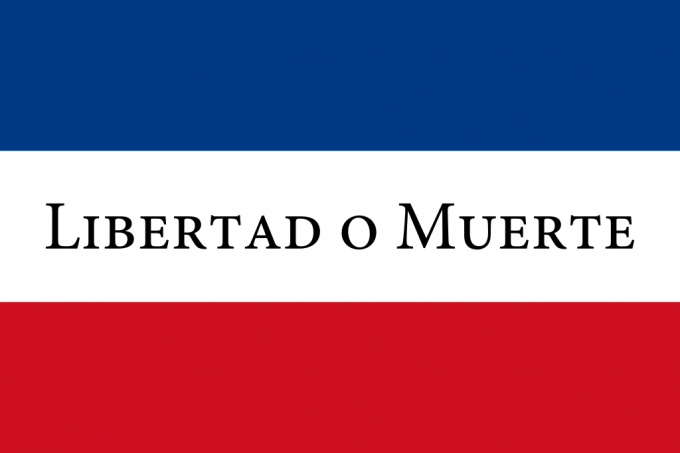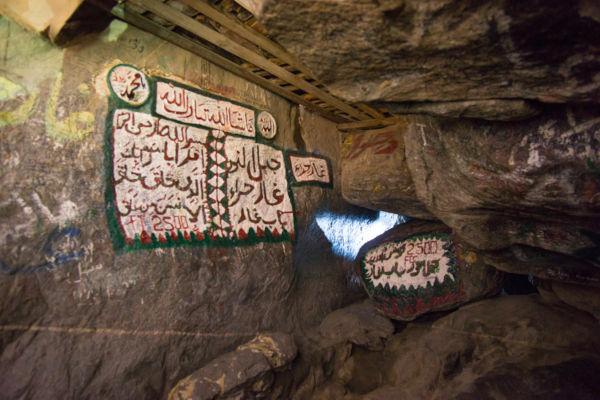The Uruguayan flag, adopted in 1830, has nine interspersed horizontal lines in blue and white, and in the upper left corner there is a gilding with 16 spokes, 8 straight and 8 wavy.
By law, the proportion of the Uruguayan pavilion is 2:3, that is, if it is made 2 meters wide, it must be 3 meters long. The sun must be made with a diameter of 11/15 of the white square in which it is inserted.

Current flag of Uruguay, adopted in 1830.
Meanings of Uruguayan Flag Colors and Symbols
At lines of the Uruguayan flag represent the 9 departments that formed the country at the time of its creation: Durazno, Montevideo, Cerro Largo, Soriano, San José, Canelones, Colonia, Maldonado and Paysandú.
The layout of the Uruguayan flag was inspired by the flag of the United States, whose lines represented the 13 British colonies that proclaimed independence from England.
At Colors The blue and white flag of the flag was inspired by the flag of the Provinces of Rio de la Plata, of which Uruguay was a part before becoming independent.
The golden sun represents the Inca sun god, is also called Sol de Maio, in reference to the May Revolution, which took place in 1810 and which started Uruguay's independence.

See also the meaning of United states's flag and of the Spanish flag.
The History of the Uruguay Flag
After nearly two centuries of Spanish rule, in 1821, the Uruguayan territory was annexed to Brazilian lands and was renamed Cisplatin Province.
Until 1825 its flag consisted of two horizontal green lines at the ends and a white line at the center, where a shield was located.
 Flag of the Province of Cisplatine, 1823-1825.
Flag of the Province of Cisplatine, 1823-1825.
In 1825, the Province of Cisplatina declared itself independent from Brazil and joined the United Provinces of Rio de la Plata, formed by: Argentina, Bolivia, Southern Brazil, Paraguay, Northern Chile and Southern Peru.
This movement became known as 33 oriental, a reference to the expeditionaries who landed in Uruguayan territory to free the country from Brazilian rule.
These united provinces adopted a tricolor flag: blue, white and red in horizontal lines and of equal size. In the center strip is the following sentence:"Freedom the Death".
Learn more about country flags.
 Flag of the resistance forces of the 33 Orientals, 1823.
Flag of the resistance forces of the 33 Orientals, 1823.
THE Flag of the 33 Orientals is, even today, a official flag of Uruguay. At official parties and ceremonies, it is hoisted together with the National Flag and the Artigas Flag.
Uruguay declares itself independent in 1825 and in 1828 a law defines the country's flag with 9 blue stripes representing each department and 10 interspersed white lines. In 1930 another law was enacted, reducing the number of stripes to 9, being 5 white and 4 blue.
The departments that the 9 lines represented were: Durazno, Montevideo, Cerro Largo, Soriano, San José, Canelones, Colonia, Maldonado and Paysandú - Today there are 19 departments in the country.
The blue and white colors were inspired by the flag that the Argentine general Manuel Belgrano (1770-1820) proposed to the United Provinces of Rio de la Plata. It is worth remembering that Argentina adopted the same colors in its flag and also has a reference to Sol de Maio.
The Uruguayan flag as we know it today was made official on July 12, 1830 and designed by Joaquin Suarez, the country's first head of state.
Also know the meaning of flag of argentina, Brazil's flag and Chile flag.
Official flags of Uruguay
Uruguay is one of the few countries in the world that has more than one official flag. In addition to the national flag, two other flags are hoisted at official ceremonies: a Flag of the Thirty-Three Orientals and the Artigas Flag.
 Flag of Artigas, 1815-1820.
Flag of Artigas, 1815-1820.
The Bandeira dos Trinta e Três is a tribute to the movement that fought for the independence of the Uruguayan territory, which was under the rule of the Brazilian Empire from 1822 to 1825.
The Artigas Flag is a tribute to the general José Gervasio Artigas (1764-1850), considered a national hero for the liberation of Uruguay from Spanish forces. This flag was designed by Artigas himself in 1814 and became the official symbol in 1952.
See also the meaning of flag of japan, Russian flag and Germany's flag.

